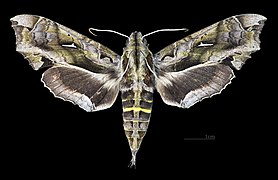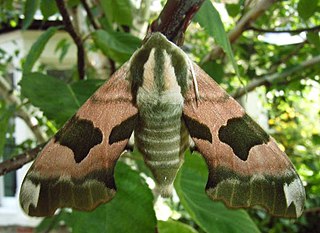
Mimas tiliae, the lime hawk-moth, is a moth of the family Sphingidae. It is found throughout the Palearctic region and the Near East, and has also been identified in Canada's east and western provinces and in northern Spain (Europe). The species was first described by Carl Linnaeus in his 1758 10th edition of Systema Naturae.
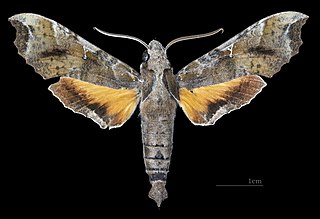
Callionima calliomenae is a moth of the family Sphingidae.
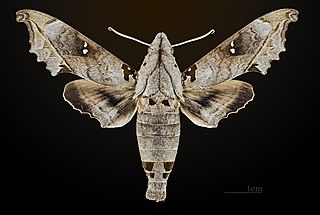
Madoryx oiclus is a moth of the family Sphingidae. It is known from Suriname, French Guiana and from Venezuela to Costa Rica. It has also been recorded in Paraguay, Argentina and Bolivia.

Pachylia ficus, known as the fig sphinx, is a moth of the family Sphingidae. It lives from the northern tip of South America in Uruguay through Central America to the southern tip of the United States straying into Arizona and Texas.

Nephele subvaria is a species of moth in the family Sphingidae.

Xylophanes amadis is large moth of the Family Sphingidae.

Manduca brasiliensis is a moth of the family Sphingidae.
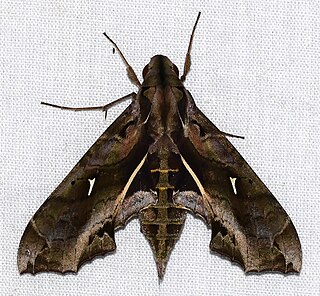
Hemeroplanes ornatus is a species of sphinx moth native from Mexico through northern South America. The species was first described by Walter Rothschild in 1894.

Theretra boisduvalii is a moth of the family Sphingidae.
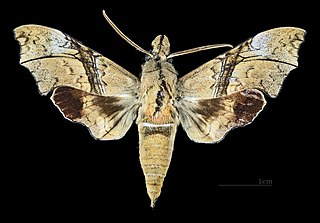
Aleuron iphis is a moth of the family Sphingidae. It was described by Francis Walker in 1856
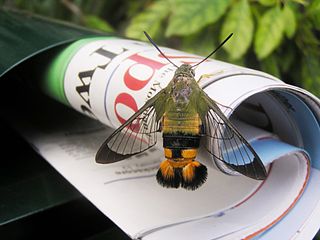
Cephonodes kingii, the gardenia bee hawk, is a moth of the family Sphingidae.
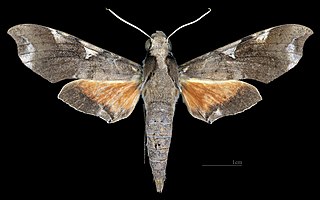
Callionima acuta is a species of moth in the family Sphingidae. It was originally described by Walter Rothschild and Karl Jordan as Hemeroplanes acuta, in 1910.
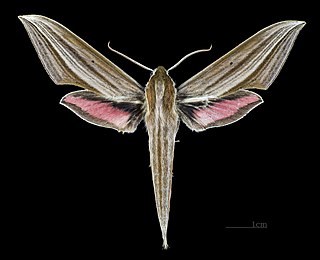
Xylophanes neoptolemus is a moth of the family Sphingidae.
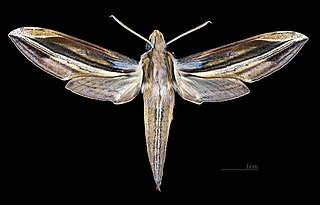
Xylophanes pyrrhus is a moth of the family Sphingidae.

Hemeroplanes diffusa is a moth of the family Sphingidae.
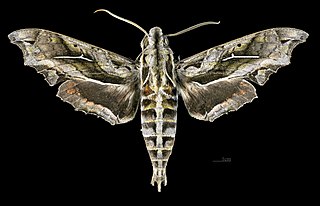
Hemeroplanes longistriga is a moth of the family Sphingidae.
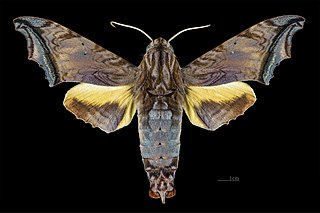
Nyceryx stuarti is a species of moth in the family Sphingidae.
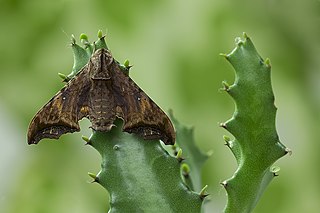
Nyceryx riscus is a moth of the family Sphingidae.

Eumorpha obliquus is a moth of the family Sphingidae. It is found from Belize, Guatemala, Nicaragua and Costa Rica south to Bolivia. It is also present in Brazil and Guadeloupe.

Ambulyx substrigilis, the dark-based gliding hawkmoth, is a species of moth of the family Sphingidae. It was described by John O. Westwood in 1847.


